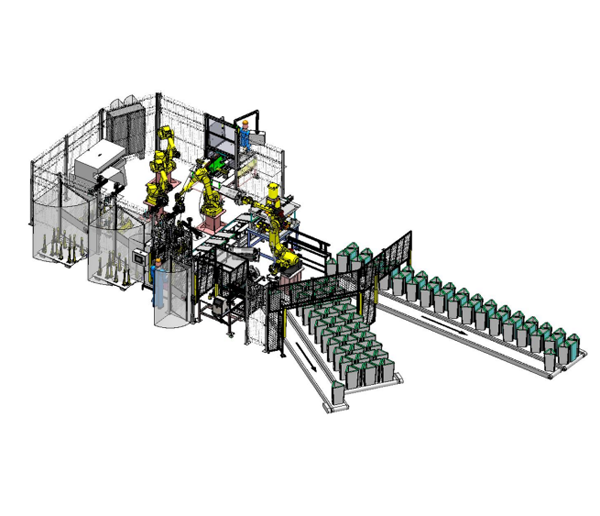Industry:
The company we worked with in this case wanted to create a flexible manufacturing solution for its production equipment. They needed more versatility from the equipment for a more cost-effective outcome overall. ACRO’s design team worked to find the best result for this forward-thinking automotive component manufacturer.
The client is a company that works with their customers to build better products. They required ACRO’s help to create more versatile manufacturing equipment and tooling. See the case study below to learn how our engineers found the right solution for this client:
Processes
The relevant processes included robotic welding, tooling changeover, and flexible manufacturing.
Company Background
The customer is one of the major companies involved in the production of automotive emission components, with locations worldwide. This company continually enhances their competencies. They work with their customers on new concepts to make the car of tomorrow even better.

Challenge:
When the company received an order for a new exhaust manifold, they would buy capital equipment and tooling designed to make that one specific product. Once the lifespan of that product ended, the capital equipment was put into a storage warehouse and never used again. The customer wanted to examine the possibility of developing standard capital equipment that could be reused for multiple products.
Assessment:
Buying equipment specifically designed for one product is not flexible manufacturing, and over time, this practice can be very costly. The higher production costs of this manufacturing plant could cause it to lose bids for future contracts. Additionally, the costs could decrease the profitability of the plant.
The customer and ACRO’s team engaged in mutual brainstorming meetings. We looked at the scope of the products that the plant currently produced and the processes that are common when manufacturing products, in general. We developed a common capital equipment line that fit all the requirements of the majority of the plant’s products. These were the steps taken by our design team:
01
To implement the welding of the components, a standard two-station weld cell with a single robot was developed.
02
One station has a two-axis positioner, and the other has a single-axis positioner. The tooling has quick-change pneumatic and electrical connectors.
03
There was no room for the tooling to be changed out in the front, so the cell was designed with tooling change-out through the back of the cell.
A standard production line was established for the customer, with capital equipment that could be used repeatedly. Not only does this concept allow for the addition of new products, but it can also level out the peaks and valleys of product volume requirements.
Currently, our customer has over 14 of these standard production lines with multiple tooling sets at their plant.